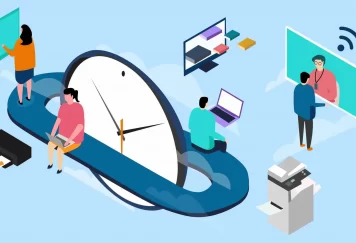Conferences are an opportunity to learn about fresh trends, new experiences. They are a unique source of information, so such events are the best entry point into the professional environment. An opportunity to look around, make valuable acquaintances, talk about personal experience, gain new knowledge and experience, develop and have fun — what could be better?
What are Startup Conferences?
- It is an event that brings together entrepreneurs and innovators.
- A unique stage where the founders of startups talk about their experiences, discuss technological trends and new ideas.
- The unique atmosphere of interaction, sharing experiences, and networking.
Why do startup conferences work?
- Entrepreneurs and business representatives talk about the most compelling cases.
- Such events allow the startup community to unite, people who think innovative and want to make the world a better place.
- Such platforms are a unique opportunity for participants and guests to attract the attention of investors to their projects.
Why Go to a Startup Conference?
Why do we need Startup Conferences 2022? What does it give to the participants, and how is the communication environment for investors and innovators organized? The idea was to hold a big event where startups that create technologies, on the one hand, and investors, the people who finance or buy them, would meet in an informal atmosphere.
There are few such events, and the existing ones are more formal. That is why the main task of high-quality startup conferences is to introduce these two groups of people to each other. They can talk to each other, get acquainted, understand the needs, what requirements an investor has for a startup, and vice versa.
A considerable number of people attend at one time. The structure of the event: the first part is a conference, during which experienced speakers speak on topics of interest to startups. The second part is competitive, a contest of startups, where a jury consisting of investors and technology experts evaluates the projects and chooses three winners; and the third part is the exhibition of startups.
In selecting speakers, the organizers specifically look for entrepreneurs who have launched startups and share their experiences. Representatives of technoparks and large companies always attend such events. In addition, there is a growing representation from higher education institutions, both teachers and students, at Startup conferences every year. Technoparks and innovative development institutes are one component, and the second is the key industrial partners and venture vectors.
The second big area is working with regions. For example, the Startup Tour travels through cities, and its winners participate in the Startup Conferences competition program. Therefore, it is crucial to cooperate with all regional governments, business incubators, and technoparks.
The third block of cooperation is innovation centers and development institutes, which actively help organize and participate in selecting speakers.
Besides, startups are selected through development institutes, which will participate in the contest and be there. The places available for participation in the competition are limited. But participation is not the only thing that matters. Even if you send in your presentation and get some feedback, this will already be useful for young innovators.
How Do You Organize Communication Between Investors and Startups During the Startup Conference?
First of all, a certain amount of time is allocated for the presentation during the pitch sessions themselves. There is also time for answering questions. Then the startups, the audience, and the jury get to know each other. Attendees, startups, and investors have different-colored badges, facilitating communication and identification between sessions.
Secondly, suppose there is an information transfer from a speaker to the audience or a discussion on the stage, the audience listens. In that case, there is interactive communication on other sets. For example, master classes on various topics, from creating a startup to increasing sales when you already have a company, are held in two pavilions. That’s how direct communication and interaction happen.
What is the Audience for the Startup Conferences?
The engaging audience consists of tech entrepreneurs, students, and those interested in the topic. However, the overwhelming majority are students from technical universities, entrepreneurs, and startups. There are also representatives from technology parks and regional representatives.
What does Participation in the Startup Conferences Give You?
The main thing is that you shine at the conference, and you are seen and heard. Of course, it does not mean that an investor will come to you right away. But you will listen to the opinion of professionals about your project. Maybe you will meet representatives of technoparks, both Moscow and regional, or you will find potential colleagues, new employees, clients, and investors. So get to know each other and give out your contacts, and sooner or later, it will work out. And a conference gives you a chance to tell others about the project, and that’s where pitching comes in.
How to Pitch a Startup to a Startup Conferences: Instructions
A funder usually has 3 minutes to make a pitch at startup conferences. However, if you prepare well, 180 seconds is not too little.
Ideally, a pitch presentation at a summit should have no more than ten slides. Although the number of slides is not the main thing, the production must contain everything the jury and potential investors want to hear. You must speak about the market potential, competitors, and plans for the future, but first of all, you must highlight the strengths of your startup in particular. They may vary from startup to startup.
First, Introduce Yourself
Here everything is clear. The product name, slogan, logo, and image. In addition, we added mentions of the media who wrote about us: publications in reputable publications increase the startup’s credibility.
Talk About Customer Problems
Devote the second slide to customer problems that your product will solve. In our case, we described the difficulties of users of financial services:
- Too many different offers on the market.
- High thresholds of entry into investments.
- The dominance of information noise.
- Gaps in the legislation.
Explain How Your Product Solves These Problems
As you can guess, slide # 3 is a description of a cure for the client’s above-mentioned “pains.” That said, each problem from slide # 2 should be matched with a solution that your product offers.
Give an Overview of the Market
Jurors and investors want to know what market your product enters—both geographically and in terms of its investment potential. You need numbers here: how many consumers are in your segment now, how much they’re already spending on products like yours, audience growth projections, and so on.
Prove that You Can Make Money
Clearly describe your monetization model: how you’re going to make a profit.
Emphasize Your Competitive Advantages
The purpose of this slide is not just to put your startup on par with its successful competitors but to highlight your advantages over them.
Talk About Your Accomplishments Already
The pitch deck should emphasize the strengths of your startup. You can’t sugarcoat the data, but you can present it in a favorable light. Present other accomplishments, if any: positions in industry rankings, partnerships with well-known organizations, participation in conferences, mentions in reputable media.
Sell the Team
Please talk about the experience of the team members: where they worked before, what they specialized in. Of course, education does not need to be mentioned.
Reach Out to Investors
At the end of the presentation, name the investment you need. Of course, behind it should be a detailed calculation of the extra expenses.
Tell Us How to Get in Touch With You
And the last slide is the contact information.
After the presentation, a separate mention of the block “question-answer” should be made. The presentation’s content should be such as to lead the jury to your straightforward questions. For example, they often ask about licensing and how our activities are regulated by law. Think out the wording of the answers in advance.
Follow TechStrange for more Technology, Business, and Digital Marketing News.





